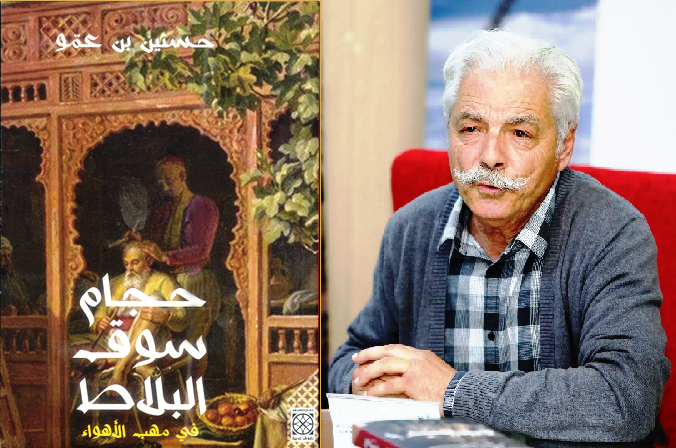The Barber of the Tile Market is a very interesting novel, but it is also a rare historical document that provides us with details we hardly come across in school or even specialized history books. Its events are historical, but they are not mentioned in the writings of official historians, which is a feature usually distinguishes historical narrative novels, those that are mixed with the writer’s fantasy creating an imaginary text carrying with it what the historian’s pen has overlooked. The dry, classical academic method of historiography inevitably differs from the fictional effort the novelist makes in researching, scrutinizing, authoring, and paralleling events and dates.
The Barber of the Tile Market is an amazing work in every sense. The reader finds on one page dozens of information that he/she would not have thought of. In a seemingly simple description of a person passing through a street, we find the history of that street, its old name, and the buildings that adorned it, its function and what it represented, all in one scene. This attention to detail is a fundamental feature in Ben Ammou’s novels.
The events of this novel relate to the biography of the Grand Vizier Mustafa bin Ismail during the rule of the “Beys” in Tunisia, specifically the period of the rule of Muhammad al-Sadiq Bey at the end of the nineteenth century.
The references and resources indicate that this minister had grown up in an abnormal social environment and mixed with homosexuals, and transformed from a mere helper boy at a barber’s in the market of tiles in the old city of Tunis to a senior minister in the court of the Bey. He also transformed from mixing with mobs and frivolous people to mixing with dignitaries, running state affairs and perpetuating the policy of corruption to the point of handing over the country to the French colonizer!
In this novel, Hassanine Ben Ammou tells us a series of isolated events that seem like a terrible narrative dating the beginning of the French protectorate in Tunisia, allowing us to look at history from another angle.
The trinity of money, power and sex is the real curse that afflicted Tunisia centuries ago, to which there has not been a cure to this day. This is how we find in The Barber of the Tile Market a work that depicts the narrow interests that revolve in the orbit of the trinity to which we have referred, and for which politicians sell their homelands at the lowest prices.
The interests of politicians are blowing a miserable people who do not realize the extent of the betrayal they are subjected to from the people whom they have enabled to take over the reins of power, whether with or without their will.
What is painful in this novel is that it is a picture of our time and its countless contradictions, creating a bitter absurdity.
But Hassanine Ben Ammou does not recount all this in a dry, documentary-historical fashion. Rather, he spreads a narrative magic that makes the literary work an art which mixes reality and imagination. His distinctive tool is the description that makes the reader see with his/her own eyes the scenes and places, feel the smells, live the mood, and hence become a witness through reading about an era and a history!
The writer has drawn the characters of his novel with a wonderful precision and the craftsmanship of the novelist and historian alike. This does not prevent him from passing a bitter hidden mockery of the ignorance of Mustafa bin Ismail and the tragedy of having his ilk at the head of the state. In fact, the reader laughs a lot while reading, even though the matter calls for tears.
To sum up, Hajem Souk Al Blat or “The Barber of the Tile Market” is an epic that proves that Hassanine Ben Ammou is one of the greatest writers of historical novels.











